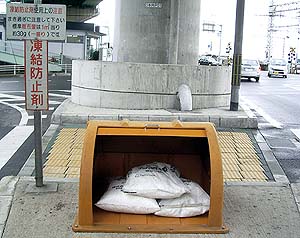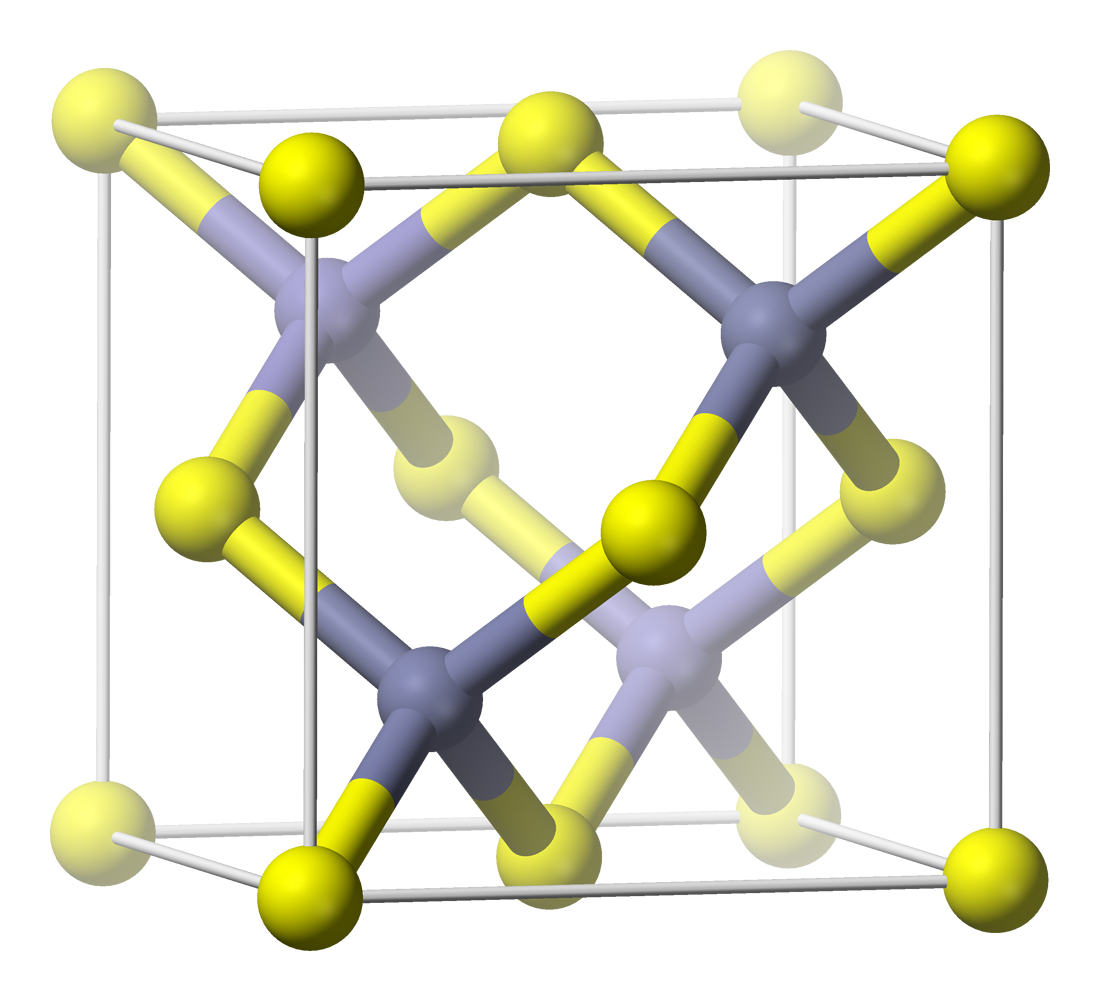|
Benstonite
Benstonite is a mineral with formula Ba6Ca6Mg(CO3)13. Discovered in 1954, the mineral was described in 1961 and named after Orlando J. Benston (1901–1966). Description and occurrence Benstonite is translucent and white, pale yellow, or pale yellow-brown in color. The mineral occurs as cleavable masses; cleavage fragments are nearly perfectly rhombohedral in shape. Cleavage faces are up to across and slightly curved. On large specimens, the faces exhibit a mosaic structure similar to that in some specimens of dolomite and siderite. Benstonite fluoresces red or yellow under x-rays and longwave and shortwave ultraviolet. The mineral also exhibits strong red phosphorescence. Benstonite is known to occur in Canada, China, India, Italy, Namibia, Russia, Sweden, and the United States. It occurs in association with alstonite, barite, barytocalcite, calcite, daqingshanite, fluorite, huntite, monazite, phlogopite, pyrite, sphalerite, strontianite, and quartz. Synthesis The mineral ... [...More Info...] [...Related Items...] OR: [Wikipedia] [Google] [Baidu] |
Carbonate Minerals
Carbonate minerals are those minerals containing the carbonate ion, . Carbonate divisions Anhydrous carbonates *Calcite group: trigonal **Calcite CaCO3 **Gaspéite (Ni,Mg,Fe2+)CO3 **Magnesite MgCO3 **Otavite CdCO3 **Rhodochrosite MnCO3 **Siderite FeCO3 **Smithsonite ZnCO3 **Spherocobaltite CoCO3 *Aragonite group: orthorhombic **Aragonite CaCO3 **Cerussite PbCO3 **Strontianite SrCO3 **Witherite BaCO3 **Rutherfordine UO2CO3 **Natrite Na2CO3 Anhydrous carbonates with compound formulas *Dolomite group: trigonal **Ankerite CaFe(CO3)2 **Dolomite (mineral), Dolomite CaMg(CO3)2 **Huntite Mg3Ca(CO3)4 **Minrecordite CaZn(CO3)2 **Barytocalcite BaCa(CO3)2 Carbonates with hydroxyl or halogen *Carbonate with hydroxide: monoclinic **Azurite Cu3(CO3)2(OH)2 **Hydrocerussite Pb3(CO3)2(OH)2 **Malachite Cu2CO3(OH)2 **Rosasite (Cu,Zn)2CO3(OH)2 **Phosgenite Pb2(CO3)Cl2 **Hydrozincite Zn5(CO3)2(OH)6 **Aurichalcite (Zn,Cu)5(CO3)2(OH)6 Hydrated carbonates *Hydromagnesite Mg5(CO3)4(OH)2.4H2O *Ikaite ... [...More Info...] [...Related Items...] OR: [Wikipedia] [Google] [Baidu] |
Huntite
Huntite is a carbonate mineral with the chemical formula Mg3Ca(CO3)4. Huntite crystallizes in the trigonal system and typically occurs as platy crystals and powdery masses. For most of recorded history its main use was as a white pigment. Today the most common industrial use of huntite is as a natural mixture with hydromagnesite as a flame retardant or fire retardant additive for polymers. Discovery In 1953 a paper by George Faust announced the discovery of a new carbonate mineral found in Currant Creek, Nevada (US). Faust acknowledged that the mineral probably had been discovered previously, but it had been misidentified as impure magnesite by W. E. Ford in 1917. Faust named the new mineral "huntite" in honour of his former teacher, Walter Frederick Hunt (1882–1975), Professor of Petrology at the University of Michigan. Faust carried out analyses of the mineral, and found amongst others that in differential thermal analysis huntite showed two endothermic peaks, which could ... [...More Info...] [...Related Items...] OR: [Wikipedia] [Google] [Baidu] |
Magnet Cove Igneous Complex
The Magnet Cove igneous complex is a small alkalic ring complex lying to the west of the town of Magnet Cove in Hot Spring County, Arkansas.Geology of Titanium-Mineral Deposits, Eric R. Force, Geological Society of America, 1991,Google Books/ref> It and the adjacent town are so named due to the existence of magnetite and the terrain being a cove, a basin-shaped valley. The complex is of Mesozoic age, intruded into Paleozoic sediments. Mapping was conducted by the geologists Erickson and Blade in 1963. Units within the complex include carbonatite, nepheline syenite, phonolite, and ijolite. In addition to the magnetite which forms both massive lodestone and crystals, the complex is strewn with odd and rare minerals, and is the type locality for five mineral species. Over 100 different minerals have been identified from the area. There are many titanium minerals such as rutile, anatase, brookite, and perovskite, as well as some vanadium mineralization. Some rare-earth-bearing m ... [...More Info...] [...Related Items...] OR: [Wikipedia] [Google] [Baidu] |
Malvern, Arkansas
Malvern is a city in and the county seat of Hot Spring County, Arkansas, United States. Founded as a railroad stop at the eastern edge of the Ouachita Mountains, the community's history and economy have been tied to available agricultural and mineral resources. The production of bricks from locally available clay has earned the city the nickname, "The Brick Capital of the World". The city had a population of 10,318 at the time of the 2010 census, and in 2019 the estimated population was 10,931. History Named after Malvern Hill, Virginia, Malvern was founded in 1870 by the Cairo and Fulton Railroad as a city site southeast of Hot Springs. On October 15, 1878, Malvern officially became the county seat of Hot Spring County. The original inhabitants of the county were Native Americans, trappers, hunters, and farmers. The Hot Springs Railroad, often referred to as the Diamond Jo line, was established as a narrow-gauge railroad by Chicago businessman Joseph Reynolds in 1874. Reynol ... [...More Info...] [...Related Items...] OR: [Wikipedia] [Google] [Baidu] |
Precipitation (chemistry)
In an aqueous solution, precipitation is the process of transforming a dissolved chemical substance, substance into an insoluble solid from a Supersaturated solution, super-saturated solution. The solid formed is called the precipitate. In case of an inorganic chemical reaction leading to precipitation, the chemical reagent causing the solid to form is called the ''precipitant''. The clear liquid remaining above the precipitated or the centrifuged solid phase is also called the 'supernate' or 'supernatant'. The notion of precipitation can also be extended to other domains of chemistry (organic chemistry and biochemistry) and even be applied to the solid phases (''e.g.'', metallurgy and alloys) when solid impurities Segregation (materials science), segregate from a solid phase. Supersaturation The precipitation of a compound may occur when its concentration exceeds its solubility. This can be due to temperature changes, solvent evaporation, or by mixing solvents. Precipitatio ... [...More Info...] [...Related Items...] OR: [Wikipedia] [Google] [Baidu] |
Sodium Carbonate
Sodium carbonate, , (also known as washing soda, soda ash and soda crystals) is the inorganic compound with the formula Na2CO3 and its various hydrates. All forms are white, odourless, water-soluble salts that yield moderately alkaline solutions in water. Historically, it was extracted from the ashes of plants growing in sodium-rich soils. Because the ashes of these sodium-rich plants were noticeably different from ashes of wood (once used to produce potash), sodium carbonate became known as "soda ash". It is produced in large quantities from sodium chloride and limestone by the Solvay process. Hydrates Sodium carbonate is obtained as three hydrates and as the anhydrous salt: * sodium carbonate decahydrate (natron), Na2CO3·10H2O, which readily efflorescence, effloresces to form the monohydrate. * sodium carbonate heptahydrate (not known in mineral form), Na2CO3·7H2O. * sodium carbonate monohydrate (thermonatrite), Na2CO3·H2O. Also known as crystal carbonate. * anhydrous sodium ... [...More Info...] [...Related Items...] OR: [Wikipedia] [Google] [Baidu] |
Calcium Chloride
Calcium chloride is an inorganic compound, a salt with the chemical formula . It is a white crystalline solid at room temperature, and it is highly soluble in water. It can be created by neutralising hydrochloric acid with calcium hydroxide. Calcium chloride is commonly encountered as a hydrated solid with generic formula , where ''n'' = 0, 1, 2, 4, and 6. These compounds are mainly used for de-icing and dust control. Because the anhydrous salt is hydroscopic and deliquescent, it is used as a desiccant.Robert Kemp, Suzanne E. Keegan "Calcium Chloride" in Ullmann's Encyclopedia of Industrial Chemistry 2000, Wiley-VCH, Weinheim. Uses De-icing and freezing-point depression By depressing the freezing point of water, calcium chloride is used to prevent ice formation and is used to de-ice. This application consumes the greatest amount of calcium chloride. Calcium chloride is relatively harmless to plants and soil. As a deicing agent, it is much more effective at lower temperat ... [...More Info...] [...Related Items...] OR: [Wikipedia] [Google] [Baidu] |
Barium Chloride
Barium chloride is an inorganic compound with the formula Ba Cl2. It is one of the most common water-soluble salts of barium. Like most other water-soluble barium salts, it is white, highly toxic, and imparts a yellow-green coloration to a flame. It is also hygroscopic, converting first to the dihydrate BaCl2(H2O)2. It has limited use in the laboratory and industry. Structure and properties BaCl2 crystallizes in two forms ( polymorphs). One form has the cubic fluorite ( CaF2) structure and the other the orthorhombic cotunnite ( PbCl2) structure. Both polymorphs accommodate the preference of the large Ba2+ ion for coordination numbers greater than six. The coordination of Ba2+ is 8 in the fluorite structure and 9 in the cotunnite structure. When cotunnite-structure BaCl2 is subjected to pressures of 7–10 GPa, it transforms to a third structure, a monoclinic post-cotunnite phase. The coordination number of Ba2+ increases from 9 to 10. In aqueous solution BaCl2 behaves as a ... [...More Info...] [...Related Items...] OR: [Wikipedia] [Google] [Baidu] |
Magnesium Chloride
Magnesium chloride is the family of inorganic compounds with the formula , where x can range from 0 to 12. These salts are colorless or white solids that are highly soluble in water. These compounds and their solutions, both of which occur in nature, have a variety of practical uses. Anhydrous magnesium chloride is the principal precursor to magnesium metal, which is produced on a large scale. Hydrated magnesium chloride is the form most readily available. Production Magnesium chloride can be extracted from brine or sea water. In North America, it is produced primarily from Great Salt Lake brine. In the Jordan Valley, it is obtained from the Dead Sea. The mineral bischofite () is extracted (by solution mining) out of ancient seabeds, for example, the Zechstein seabed in northwest Europe. Some deposits result from high content of magnesium chloride in the primordial ocean. Some magnesium chloride is made from evaporation of seawater. In the Dow process, magnesium chloride is regen ... [...More Info...] [...Related Items...] OR: [Wikipedia] [Google] [Baidu] |
Quartz
Quartz is a hard, crystalline mineral composed of silica (silicon dioxide). The atoms are linked in a continuous framework of SiO4 silicon-oxygen tetrahedra, with each oxygen being shared between two tetrahedra, giving an overall chemical formula of SiO2. Quartz is the second most abundant mineral in Earth's continental crust, behind feldspar. Quartz exists in two forms, the normal α-quartz and the high-temperature β-quartz, both of which are chiral. The transformation from α-quartz to β-quartz takes place abruptly at . Since the transformation is accompanied by a significant change in volume, it can easily induce microfracturing of ceramics or rocks passing through this temperature threshold. There are many different varieties of quartz, several of which are classified as gemstones. Since antiquity, varieties of quartz have been the most commonly used minerals in the making of jewelry and hardstone carvings, especially in Eurasia. Quartz is the mineral defining the val ... [...More Info...] [...Related Items...] OR: [Wikipedia] [Google] [Baidu] |
Strontianite
Strontianite ( Sr C O3) is an important raw material for the extraction of strontium. It is a rare carbonate mineral and one of only a few strontium minerals. It is a member of the aragonite group. Aragonite group members: aragonite (CaCO3), witherite (BaCO3), strontianite (SrCO3), cerussite (PbCO3) The ideal formula of strontianite is SrCO3, with molar mass 147.63 g, but calcium (Ca) can substitute for up to 27% of the strontium (Sr) cations, and barium (Ba) up to 3.3%. The mineral was named in 1791 for the locality, Strontian, Argyllshire, Scotland, where the element strontium had been discovered the previous year. Although good mineral specimens of strontianite are rare, strontium is a fairly common element, with abundance in the Earth's crust of 370 parts per million by weight, 87 parts per million by moles, much more common than copper with only 60 parts per million by weight, 19 by moles. Strontium is never found free in nature. The principal strontium ores are c ... [...More Info...] [...Related Items...] OR: [Wikipedia] [Google] [Baidu] |
Sphalerite
Sphalerite (sometimes spelled sphaelerite) is a sulfide mineral with the chemical formula . It is the most important ore of zinc. Sphalerite is found in a variety of deposit types, but it is primarily in Sedimentary exhalative deposits, sedimentary exhalative, Carbonate-hosted lead-zinc ore deposits, Mississippi-Valley type, and Volcanogenic massive sulfide ore deposit, volcanogenic massive sulfide deposits. It is found in association with galena, chalcopyrite, pyrite (and other sulfide mineral, sulfides), calcite, dolomite (mineral), dolomite, quartz, rhodochrosite, and fluorite. German geologist Ernst Friedrich Glocker discovered sphalerite in 1847, naming it based on the Greek word ''sphaleros'', meaning "deceiving", due to the difficulty of identifying the mineral. In addition to zinc, sphalerite is an ore of cadmium, gallium, germanium, and indium. Miners have been known to refer to sphalerite as ''zinc blende'', ''black-jack'', and ''ruby blende''. Marmatite is an opaque ... [...More Info...] [...Related Items...] OR: [Wikipedia] [Google] [Baidu] |






